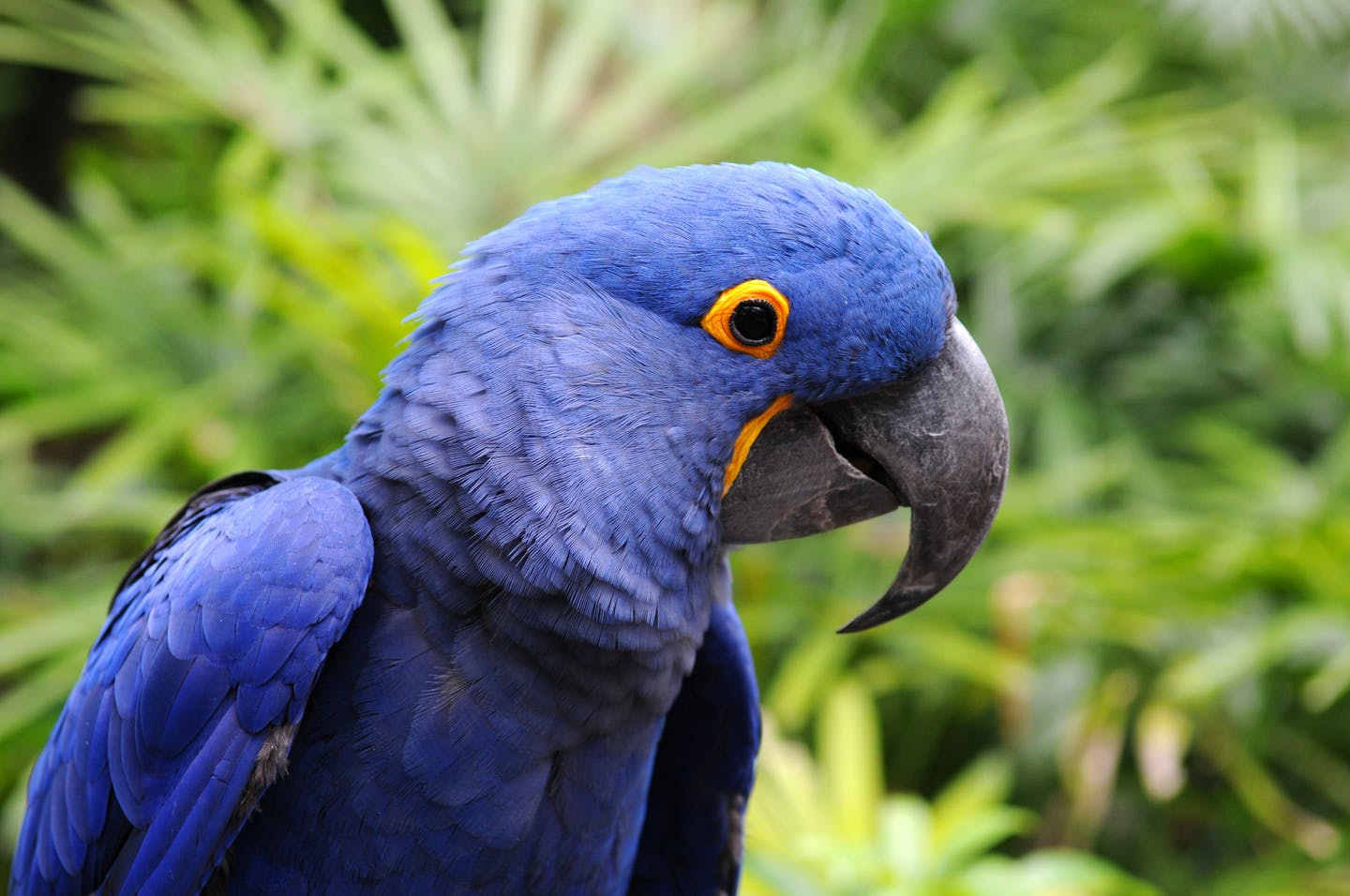Hyacinth macaw: The largest parrot in the world
One Earth’s “Species of the Week” series highlights the flagship species of each of the 844 unique ecoregions contained within Earth’s bioregions.
On the outskirts of the dense rainforests in Brazil, Bolivia, and Paraguay, lives a stunning parrot with brilliant, cobalt-blue feathers. The hyacinth macaw (Anodorhynchus hyacinthinus) is the largest of the macaw species, and its powerful beak allows it to break open nuts from native palms and reseed its habitat.
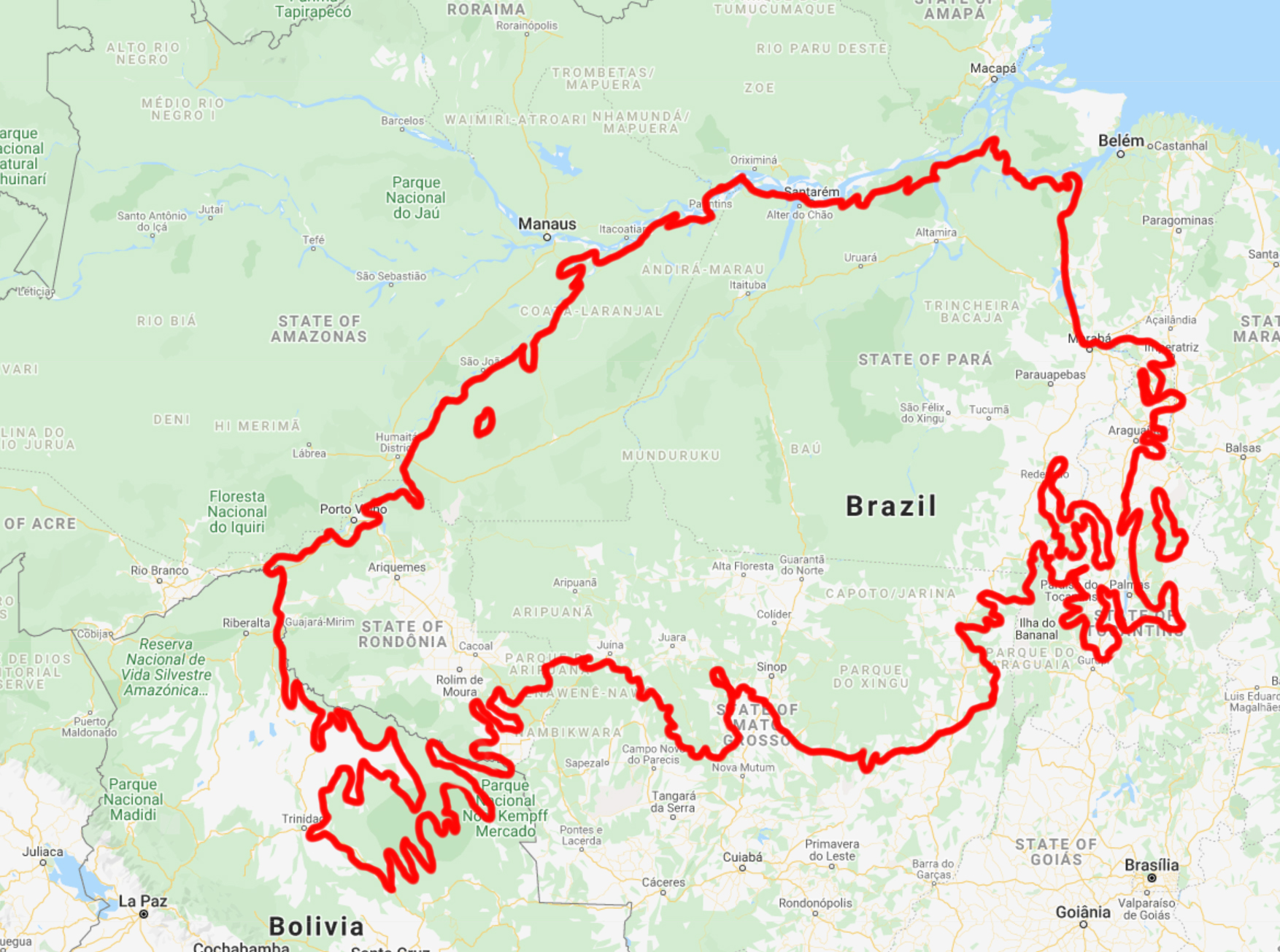
Hyacinth macaws are the flagship species of the Tapajós-Xingu Moist Forests ecoregion, located in the Southern Amazonian Forests bioregion (NT17).
Life in the wetlands
The largest parrot in the world by length, the hyacinth macaw measures one meter (3 ft 3 in) long from the tip of its tail to the top of its head. Only the flightless kakapo of New Zealand outweighs it at up to 3.5 kilograms. Hyacinth macaws reach a maximum of 1.7 kilograms (3 lb 12 oz).
Unlike most parrot species that prefer dense tropical rainforest habitats, hyacinth macaws are found in lightly forested areas like palm swamps and flooded grasslands. A significant part of the population lives in the Pantanal region of Brazil, the world's largest tropical wetland area.
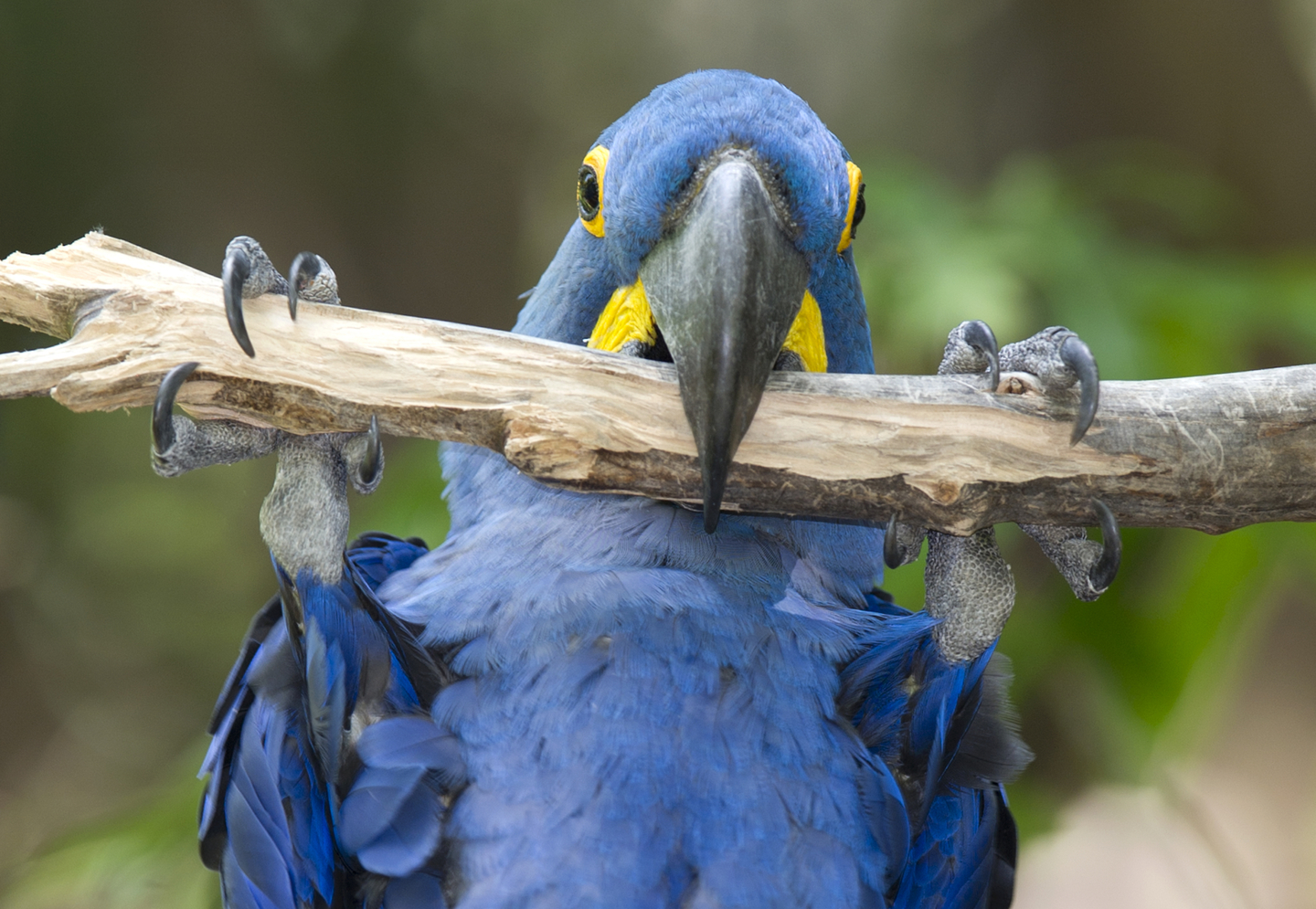
One powerful bite
Along with its striking blue plumage, the hyacinth macaw has distinct bright yellow feathers around the eyes and at the base and the corners of the beak, making it appear to have a perpetual grin. Looks can be deceiving, however, as their seemingly smiling beak has a powerful bite with the ability to apply more than 300 pounds of pressure per square inch.
Nuts from specific palm species such as Mucuja and bocaiuva palms make up most of the hyacinth macaw’s diet and where this intense beak strength is used. Their strong bites can also crack coconuts, large brazil nut pods, and even macadamia nuts.
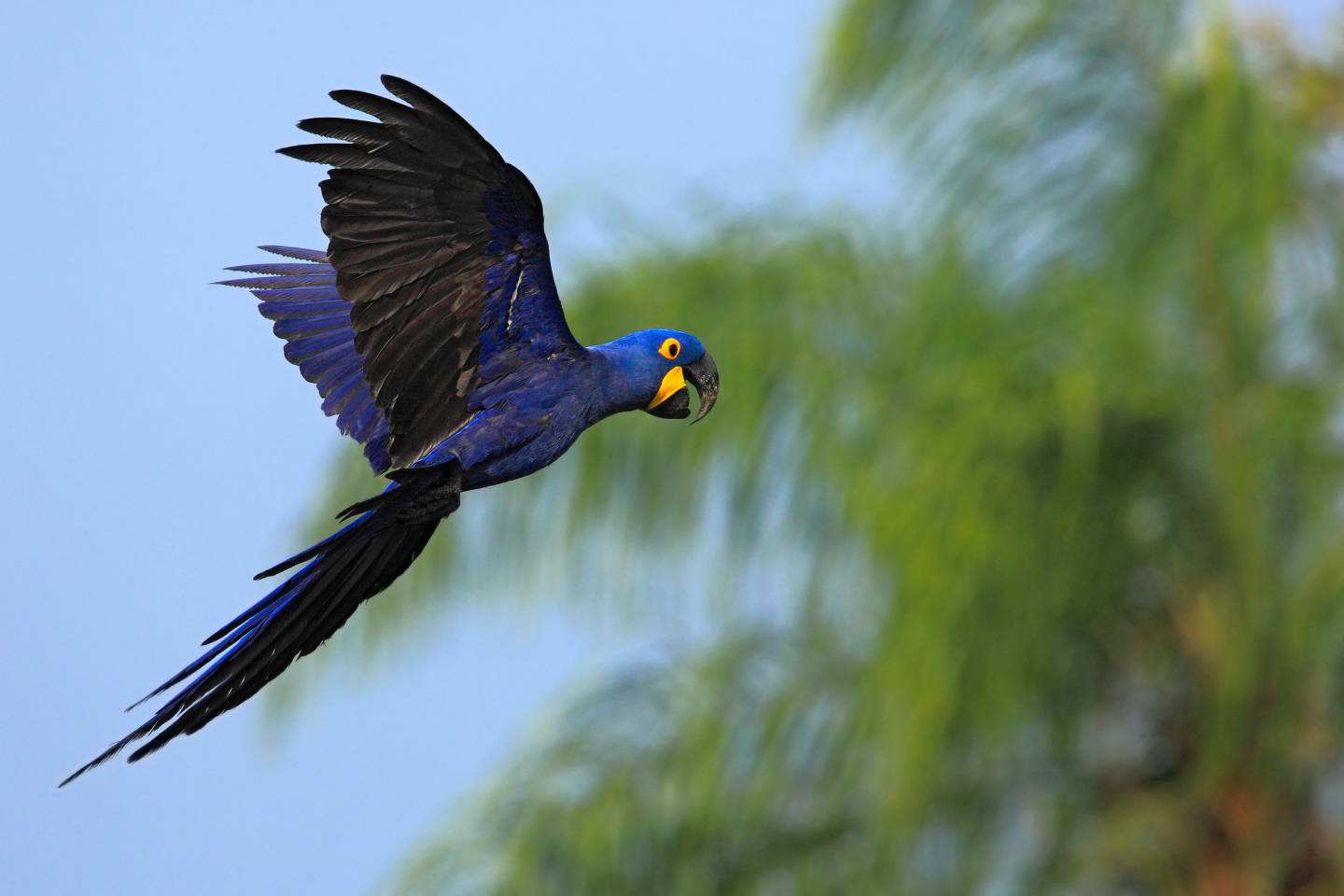
Vital seed dispersers
As hyacinth macaws break open nuts and feed on the kernels inside, the seeds from these tree species can be spread throughout the forest as the birds fly. Since many other birds and animals do not have the jaw or muscle strength to crack open such tough shells, it is thought that hyacinth macaws play a vital role in dispersing such seeds, helping their ecosystem flourish.
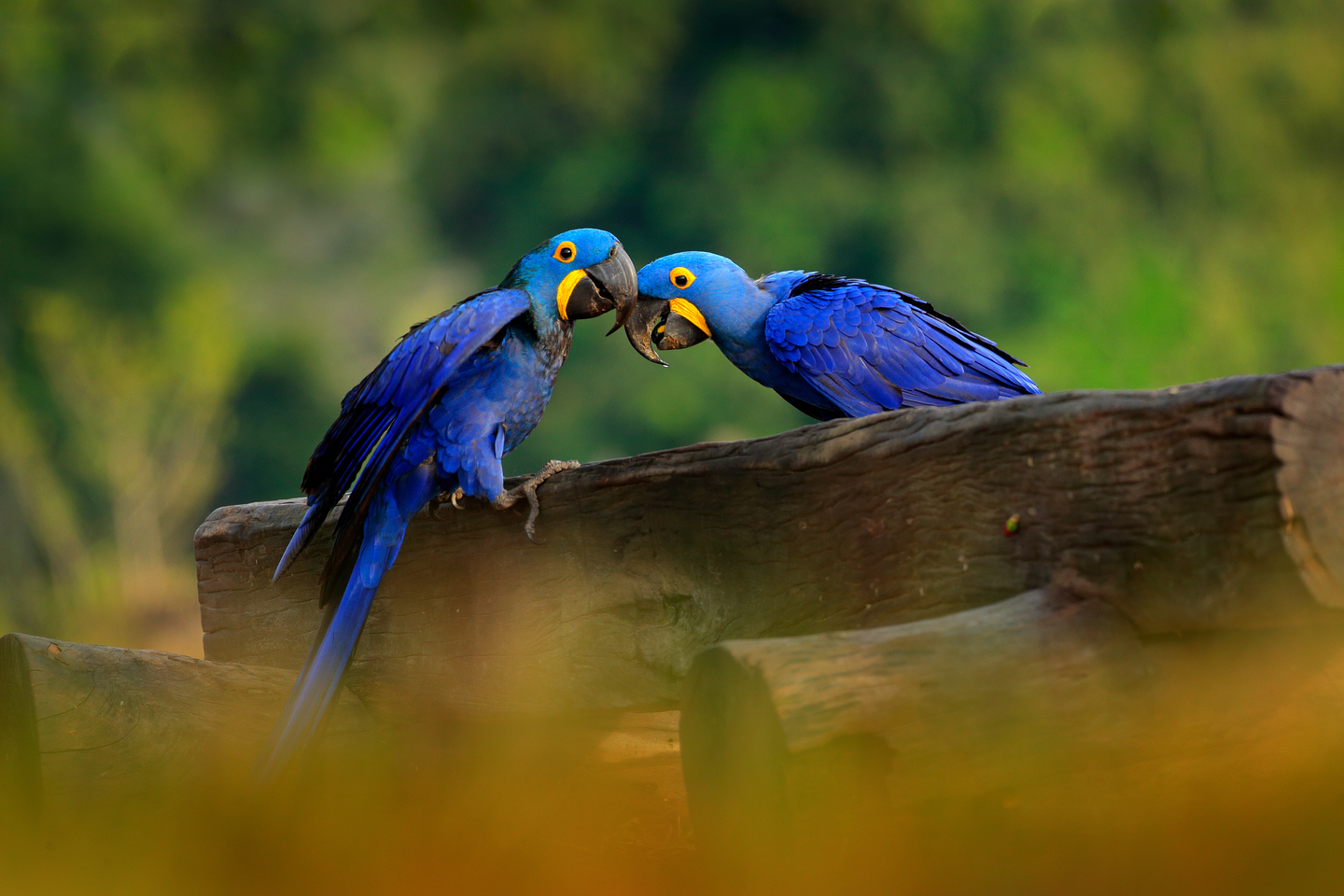
Vocal parenting pairs
Hyacinth macaws are known to fly in pairs and constantly contact one another through vocalizations, even if they are on opposite sides of the forest. Breeding and nesting occur between July and December, with nests constructed in tree cavities or cliff faces.
Male hyacinth macaws attend to their female while she incubates the eggs, which lasts about a month. Chicks leave the nest around 110 days to explore but remain dependent on their parents until six months old.
%20is%20a%20beautiful%20bird%2C%20deep%20cobalt%20blue%20in%20colour.%20dreamstime_xxl_639716.jpeg)
Reliance on toucans
Perhaps one of the most well-known rainforest birds, the toucan, and hyacinth macaws have a unique relationship. While toucans are a primary predator of macaw eggs, most of the nests of these eggs would not exist without the toucans.
Toucans are the primary seed dispersers of Sterculia apetala, more commonly known as Panama or manduvi trees. In the Pantanal region, 90% of hyacinth macaw nests are constructed from manduvi trees, making them essential for reproduction.
%2C%20or%20hyacinthine%20macaw%2C%20is%20a%20blue%20parrot%20native%20South%20America%20s%20Amazon%20jungle.%20dreamstime_xxl_51901796.jpeg)
Conservation efforts
When interacting with humans, hyacinth macaws have been described as "gentle giants" or the “Great Danes” of parrots with their calm, even-tempered dispositions. Yet, this charming nature has led to their trapping for the pet trade and has taken a heavy toll on their population in the wild, in addition to habitat loss.
Now, protected by law in Brazil and Bolivia, commercial export of the species is banned. Furthermore, the Hyacinth Macaw Project in the Brazilian state of Mato Grosso do Sul has carried out several conservation practices, including constructing artificial nests to help encourage mating.
Beautiful and charismatic, the hyacinth macaw displays some of the finest features nature offers, but to truly treasure this species, a paradigm shift in the thinking of humans must change. Wildlife must be kept and protected where it rightfully belongs for all to enjoy.
Interested in learning more about the species and bioregions of Southern America? Use One Earth's interactive Navigator to explore bioregions around the world.
Launch Bioregion Navigator